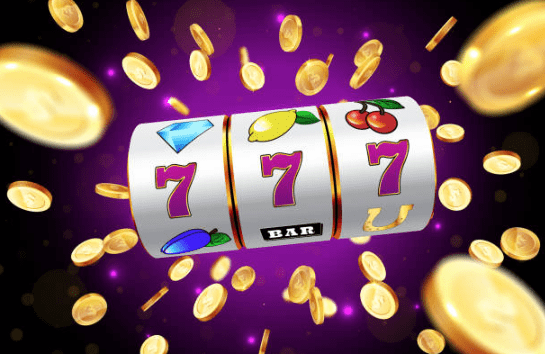Exploring the Myth of 'Hot' and 'Cold' Slot Machines

Slot machines have long been a staple in casinos, both in physical establishments and online. Among players, there’s a persistent belief in the existence of "hot" and "cold" machines, where the former are seen as more likely to pay out and the latter are perceived as unlikely to win. This article delves into the myths surrounding hot and cold slot gacor machines, exploring the psychology behind these beliefs, the mechanics of slot machines, and the implications for players.
Understanding the Hot and Cold Myth
Defining Hot and Cold Machines
The terms "hot" and "cold" refer to players' perceptions of a slot machine's payout behavior. A "hot" machine is thought to be on a winning streak, giving out frequent payouts or big jackpots. In contrast, a "cold" machine is perceived as having gone a long time without a payout and is thus considered less likely to win. This belief leads many players to gravitate towards machines they deem hot, believing they will increase their chances of winning.
The Origin of the Myth
The myth of hot and cold machines likely stems from the random nature of slot outcomes combined with human psychology. When players experience a series of wins or losses, they tend to attribute these outcomes to the machine's behavior rather than the randomness of the game. This pattern recognition, known as apophenia, leads to false beliefs about causation—players believe that previous outcomes can influence future results.
The Mechanics of Slot Machines
The Role of Random Number Generators (RNG)
At the core of every modern slot machine is a Random Number Generator (RNG), which ensures that every spin's outcome is completely random and independent of previous spins. When you press the spin button, the RNG generates a sequence of numbers that determines the position of the reels. This means that no matter how many times a machine has paid out or failed to pay, the next spin remains entirely random.
Understanding Payout Percentages and RTP
Another crucial aspect to consider is the Return to Player (RTP) percentage. RTP is a mathematical calculation that indicates the average amount a machine will pay back to players over time. For example, a slot machine with an RTP of 95% will return $95 for every $100 wagered, but this is calculated over millions of spins. In any short-term play, results can vary widely, which can contribute to the perception of hot and cold machines.
The Impact of Volatility
Volatility also plays a role in the gameplay experience. High-volatility slots might offer larger payouts but are less frequent, while low-volatility slots provide smaller, more regular wins. Players might mistakenly associate volatility with machine behavior, leading to the belief in hot and cold machines. However, volatility is simply a measure of risk and potential payout, not an indicator of a machine’s behavior.
The Psychological Influence on Player Behavior
Cognitive Biases and Fallacies
The belief in hot and cold machines can be attributed to several cognitive biases. One of the most common is the gambler's fallacy, where players believe that past events can influence future outcomes. For example, if a player notices that a machine hasn’t paid out in a while, they might think it's "due" for a win, leading them to play more aggressively.
Additionally, confirmation bias plays a role; players tend to remember wins on "hot" machines and forget losses, reinforcing their beliefs. This selective memory can create a false narrative about the effectiveness of choosing certain machines.
Emotional Decision-Making
Emotions also significantly impact decision-making in gambling. The thrill of winning can lead players to feel a machine is "hot," prompting them to continue playing despite the odds. Conversely, frustration from repeated losses can cause players to perceive a machine as "cold" and move on quickly, often without considering the randomness of the outcomes.
What Players Should Consider
The Importance of Responsible Gaming
Understanding the myth of hot and cold machines can help players make more informed decisions about their gaming habits. Recognizing that every spin is independent of the last can encourage a more rational approach to gameplay. This knowledge can also help mitigate emotional decision-making, allowing players to enjoy the experience without falling into the traps of cognitive biases.
Setting Limits and Goals
Establishing a budget and setting limits for gameplay can also enhance the gambling experience. Players should approach slot machines as a form of entertainment rather than a way to make money. By focusing on enjoyment rather than chasing losses or wins based on perceived machine behavior, players can engage in more responsible gaming.
Embracing the Randomness
Ultimately, the appeal of slot machines lies in their unpredictability. Each spin offers a chance for excitement, regardless of past outcomes. Embracing the randomness and understanding the mechanics of slots can lead to a more enjoyable and sustainable gaming experience.
Conclusion
The myth of hot and cold slot machines is deeply ingrained in the gambling culture, driven by psychological factors and misunderstandings of how these machines operate. By recognizing the role of RNGs, RTP, and cognitive biases, players can debunk these myths and approach slot gaming with a more informed perspective. Understanding that every spin is independent and embracing the randomness of the game can enhance enjoyment and promote responsible gaming practices. In the end, the thrill of slots comes not from chasing perceived patterns but from the excitement of the unknown that each spin brings.



